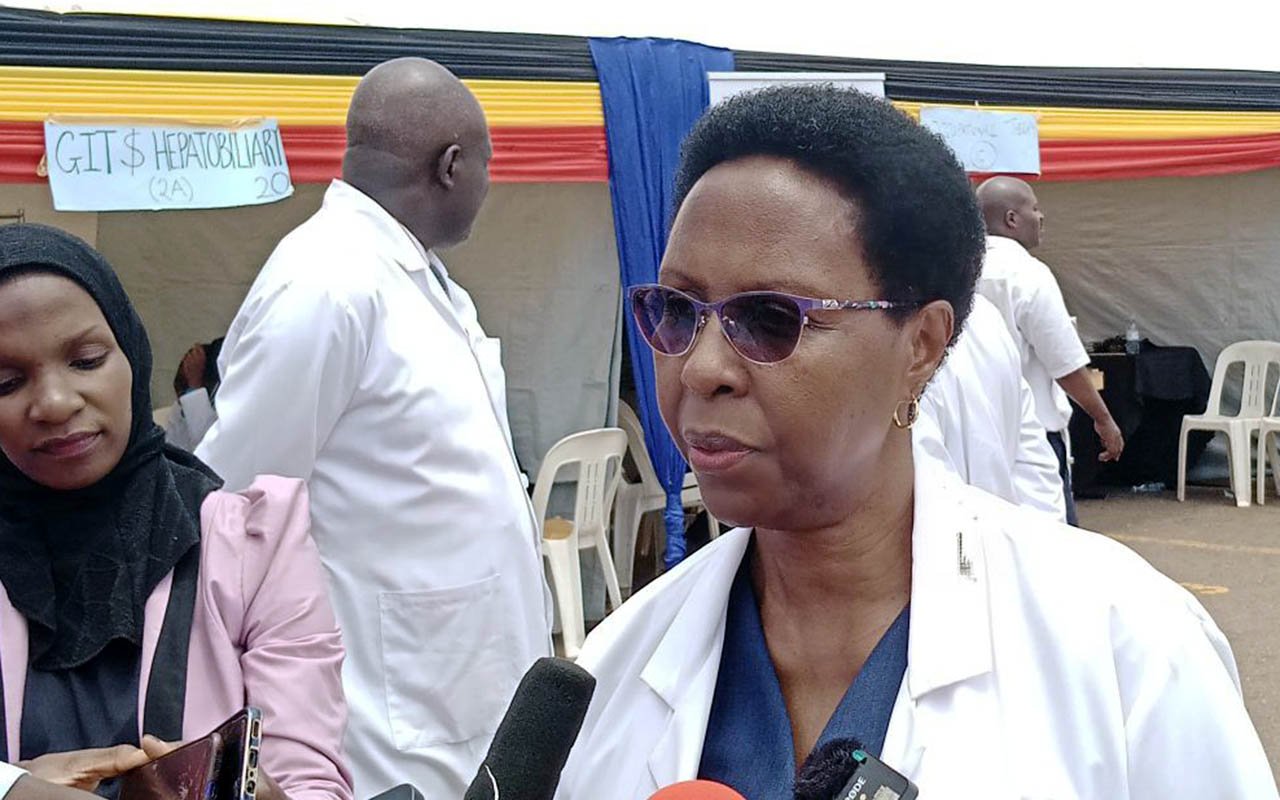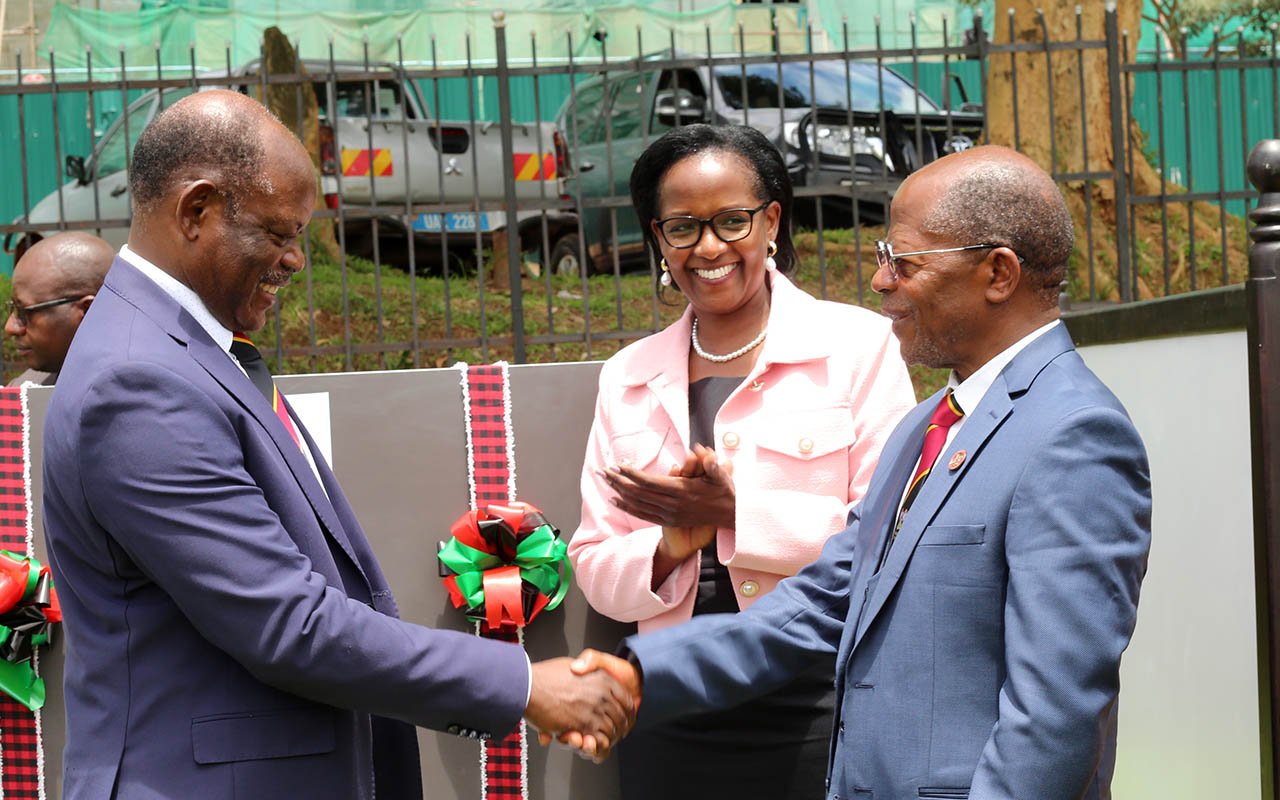Namwanje seeks to transform fragmented communities

Priscilla Namwanje
What you need to know:
Priscilla Namwanje presented a multi-scale design project in which she plans to transform Muyenga-Namuwongo neighbourhoods from a gray locality to a green social area. For this project, she won The Lafargeholcim Award which recognises innovative approaches of established architects and new voices in overcoming environmental, social and economic challenges to sustainable building.
If you believe in the mantra of ‘good things come to those who persist’, then you will identify with Priscilla Namwanje. The budding architect recently won one of the world’s most significant competitions for sustainable design- the LafargeHolcim Next generation Middle East Africa Awards, which to her was affirmation of the path of research she decided to take after graduation.
A chat with her revealed how this was an opportunity she never expected. “I applied but not I was not certain that my project would win or even be considered. For those who have been following the awards, it is not common for that category of awards to be won by people from Africa. This is something to be proud about,” a jolly Namwanje shares.
About the project
Namwanje presented a multi-scale design project in which she plans to transform Muyenga-Namuwongo neighbourhoods from a gray locality to a green social area. The awards are about sustainable design in the field of architecture, urban planning, construction or engineering in a community she lives in.
“I proposed a way in which the community fragmentation that is present between these two communities could be bridged through a system that allows for the creation of synergies between different sectors in that area,” she expounds.
To answer the question of what will become of the project, Namwanje explains that different options can be taken such as applying for a grant from Lafargeholcim to actualise the idea or using it as a foundation to write her Master’s thesis, thus making it more viable and detailed.
The budding architect is currently pursuing her Masters in Urbanism at Eindhoven University of Technology, Netherlands- an institution of tertiary education that specialises in engineering, technology, applied science and natural sciences.

Namwanje wants to transform fragmentedcommunities. photo/GodfreyLugajju.
Career journey
Before the award came into the picture, architecture was always her dream profession. But this became clearer while she was at Gayaza High School. It is here that she worked her way to a degree in architecture on government sponsorship at Makerere University.
Because she was very passionate about architecture and design, she branched into the field of research with a focus on urban planning and activism.
After graduation, Namwanje started undertaking research projects in informal settlements of Katanga, Namuwongo, Kamwokya, among others. “Not many architects are interested in informal settlements. So, choosing these as a springboard in my research work and demonstrating how these communities can be improved has been a rewarding experience,” she says.
Reimagining housing
One of her outstanding research is in informal settlements in Masese, Jinja - which was her final year thesis that focused on how housing areas can be reimagined. “Research builds on itself, so it is not easy to say I have done a physical project here or there. So, it is as finished as can be as a research project,” she adds.
Before going to the Netherlands for her Masters, Namwanje did research both as an individual and with Initiative for Community Architecture, a group of like-minded young professionals.
Challenges in urban planning
As a young architect in the field of research and activism, her journey has not been without challenges, more so, in the field of her choice.
“Right from school, it was difficult to convince people that research as a career was lucrative. It is still hard to get people on board with research projects and in the field, it is a lonely road. A few people doing it constantly ask themselves how to monetise their works,” Namwanje adds.
Rigid systems
“So, yes, there are still many grey areas. But if I can find the way, I am going to stick to it,” says Namwanje. Additionally, she notes that every day, she faces rigid systems that exist in the planning field, on top of other structural challenges that the country faces, not to mention operating in a male dominated field.
“Right from school, the number of girls is skewed. In my year, the ratio of males to females was 5:1 respectively. Right from the start, you are sort of intimidated, not by someone, but the feeling of the gender representation, which is later reflected in the field. I could go on about what I think the problem might be, but I decide to focus on the positives,” she adds.
Inspiration
Despite the challenges, Namwanje has found the support she has needed in her mentors, specifically Dr Lillian Namuganyi and the works of Dr Roberto Rocco, in social justice in the field of research in urbanism.
She also draws inspiration from work done in South America and India, where similar challenges such as those in Uganda have been solved through restructuring and re-imagining cities and the visionary work she has seen on the Lafargeholcim awards.

Namwanje working on an urban farming project with Initiative for Community Architecture in Katanga slum. photo/Godfrey Lugajju.
Trend of Uganda’s real estate
In a conversation that takes us to the trend of the country’s urban planning, the researcher believes there is an incredibly high demand for housing, but is quick to mention that informal settlers constitute the biggest percentage of this demand.
“Most people who work in the city or have their livelihood in the city cannot afford to live in the city and so, they are forced to live in slums, where housing is affordable. There are proposals to improve these areas such as building housing estates, but people have to be relocated to other areas and many changes have to be considered, such as people’s livelihoods. So, it is a multifaceted issue that needs a lot of research to inform policy, design and decisions,” Namwanje elaborates.
Skills for young professionals
As a young architect, Namwanje has had to learn a lot of things on her own. She enrolled for a number of massive open online courses. She says internationally recognised universities usually have platforms where there are free online courses one can sign up for to sharpen skills needed to fit in a dynamic workforce.
Namwanje also believes that all professionals need mentors to progress in their careers. “Young graduates need to leverage on mentorship. The value of somebody you trust and look up to for career guidance cannot be overemphasized. Personally, my mentor has stayed with me to this point and I do attribute my progress to her,” she shares, adding that spending time with like-minded individuals to network and learn is critical.
Support system
Away from her career, the 27-year-old also attributes her success to her parents who she refers to as a strong support system that has given her an opportunity to explore opportunities.
Besides school, Namwanje undertakes community research, spends most of her time meeting local authorities and leaders, reviewing proposals and meeting different people in communities to discuss matters related to urban planning.
Her award came with a prize worth Shs88.4m, approximately $25,000, which Namwanje plans to use to set up her own research practice in urbanism and urban planning.
“I want to inspire young graduates in my profession to go after their passions, take the risk, veer off the expected path and venture into the world of unknown,” she says.
About the awards
The Lafargeholcim Awards is an international competition that seeks projects and visionary concepts in sustainable construction. The Next Generation Award in Middle East category recognises outstanding ideas of young professionals and students.
The competition is designed to recognise the innovative and forward-thinking approaches of both established architects and new voices in overcoming environmental, social and economic challenges to sustainable building.
Affordable housing
“Most people who work in the city or have their livelihoods in the city cannot afford to live in the city and so, they are forced to live in slums, where housing is affordable. There are proposals to improve these areas such as building housing estates, but people have to be relocated to other areas and many changes have to be considered.So, it is a multifaceted issue that needs a lot of research to inform policy, design and decisions.’’




